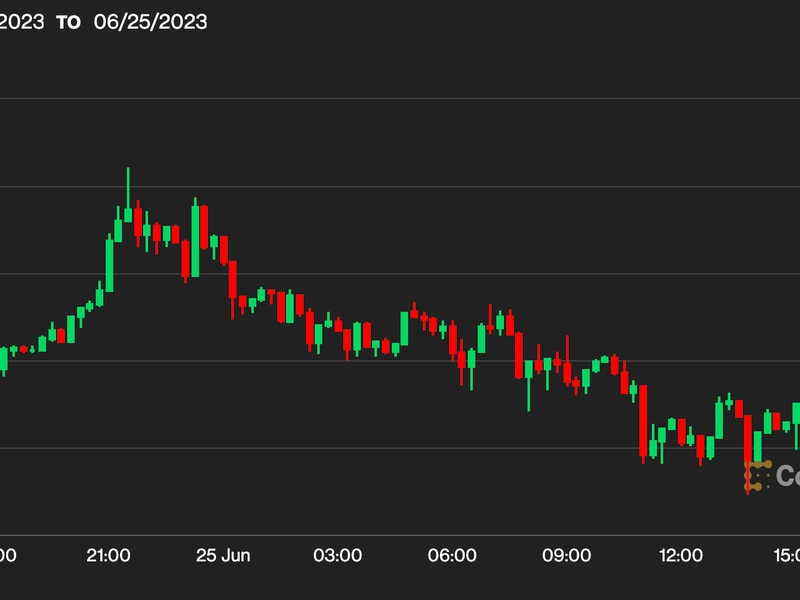What the Fed’s New Inflation Policy Means for Stablecoins
Federal Reserve Chairman Jerome Powell (Wikimedia Commons)
What the Fed’s New Inflation Policy Means for Stablecoins
Alexander Lipton is the CTO of Sila, a visiting professor and Dean’s Fellow at the Jerusalem Business School of the Hebrew University of Jerusalem, and a Connection Science Fellow at the Massachusetts Institute of Technology.
On Aug. 27, the Federal Reserve Chairman Jerome Powell gave a widely watched speech entitled “New Economic Challenges and the Fed’s Monetary Policy Review” at the Jackson Hole Economic Symposium. In his remarks, Powell announced the Fed would allow inflation to run above its long-term 2% level. More immediately, the Fed will continue with its policy of keeping the Fed funds rate at (almost) zero and buying Treasury bonds to the tune of $80 billion a month.
To put things in perspective, the Fed’s total assets stood at $4.3 trillion in March, and $6.6 trillion in August – a massive increase due to the purchases of U.S. Treasurys and mortgage-backed securities. It is very likely the Fed funds rate will stay at zero for a prolonged period of time – probably for the next five years. In comparison, in Japan, short rates have stayed at or below zero (with a short intermission) for 20 years.
In theory, the Fed’s massive money printing and the associated ballooning of its balance sheet undertaken to fight the economic impact of COVID-19 would lead to heightened inflation. In practice, inflation stays fairly low due to the global economy’s overall weakness and reduced demand. One possible explanation is that due to the high degree of economic uncertainty, both individuals and businesses tend to hoard their money rather than spend it.
In particular, banks, which under normal circumstances are eager to lend, tend to keep their assets at the Fed. Thus, commercial banks are moving away from the fractional reserve to the narrow bank model, while the Fed operates more as a fractional reserve bank. Although Powell’s announcement is of little immediate consequence, in the long term it will have profound implications for the price of equities, oil, gold and cryptos, and, more broadly, to the modus operandi of the entire financial system.
At present, deposits at all U.S. commercial banks are $15.6 trillion. At the same time, the total capitalization of all U.S. dollar–based stablecoins is about $15 billion. Banks pay no interest to their customers, thus enjoying access to deposits as a lucrative source of free funding. Yet, despite this deposit advantage, the position of banks is unstable in the long run. They can no longer offer competitive interest rates on deposits and the FDIC insurance proposals cannot offer protection to consumers in the case of any major bank defaults.
It will have profound implications for the price of equities, oil, gold and cryptos, and, more broadly, to the modus operandi of the entire financial system.
While immensely popular among the crypto natives to help ease in and out of trading positions, at present stablecoins have a limited impact on the broader economy. Stablecoins have to provide clear advantages compared to bank deposits to become economically significant to garner mass adoption.
Staking of tokens for returns is currently offering very competitive rates, but this will likely come down to a more sustainable 2% deposit rate. This could provide an attractive hedge to the 2% inflation target, but it is likely that within a decade, the total share of deposits kept in fiat-backed stablecoins or central bank digital currencies will grow dramatically. This is due to the flexibility in payments which stablecoin payments and programmable money offers, especially for businesses and institutions, if not retail consumers initially.
Stablecoins have made a dramatic impact already, but to make a larger impact on the global economy, they must fulfill broader needs.
First, they need to sever their connections to banks as collateral holders and find a regulatory-compliant way to keep collateral outside of the existing banking system. If this is not done, stablecoins will create inflationary pressure, since collateral kept with banks will trickle into the real economy and result in both stablecoin and collateral circulating in the system.
Stablecoins that provide value and options outside of the banking system is what crypto was created to do – something that currency stablecoins currently lack. In this regard, the so-called Digital Trade Coin, one of the original asset-backed stablecoins, proposed by Thomas Hardjono, Alex Pentland and myself in 2018, is particularly attractive, especially if the corresponding collateral has a positive carry.
Second, stablecoins have to make money genuinely programmable. While Bitcoin’s Pay to Script Hash (P2SH) transactions, and Ethereum’s Smart Contracts provide some programmability opportunities frequently used by experts, they are too hard to understand by regular economic agents to be essential. For example, programmable money would have expedited the distribution of stimulus checks and saved billions of dollars in the process compared to the archaic way the Treasury Department does it at present.
Third, stablecoins have to lose their national aspects and acquire meaningful cross-border features. The Fed’s new policy naturally facilitates the transformation of stablecoins from the national to the supranational level by the fact that all the developed economies are more or less on par and pay nothing on deposits.
In summary, changes in the Fed’s policy open a real possibility for building the new economy based on programmable money and regularly complaint payment rails operating entirely (or mostly) outside of the existing banking system. The broad expansion of payment mechanisms will democratize finance and make it much more inclusive and equitable. It will also force banks to become more nimble and agile to remain economically irrelevant.
Disclosure
The leader in blockchain news, CoinDesk is a media outlet that strives for the highest journalistic standards and abides by a strict set of editorial policies. CoinDesk is an independent operating subsidiary of Digital Currency Group, which invests in cryptocurrencies and blockchain startups.








